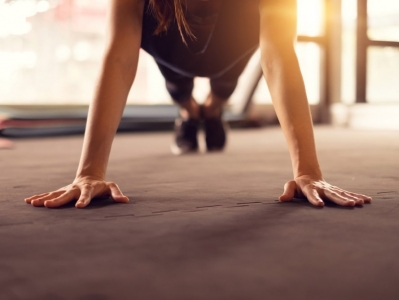The Importance of Proper Form When Working Out
January 28, 2019

No matter how experienced you are with working out, proper form is essential to improve results and prevent injury. Improper form puts stress on the wrong parts of your body and can lead to serious injury that delays your progress for days, weeks, or longer. Always consult your personal trainer with any questions you have about form, and use this guide to perform the most popular exercises properly.
Squats
Squats are easy to do, requiring no equipment when starting out, and they’re easy to do anywhere. For this reason, many beginners simply start squatting without any idea of what they’re doing. The danger here is in letting your knees drop inward. The best thing to do is to wear a mini band around your thighs to help encourage proper technique and form, but whether you use a band or not, don’t let your knees drop inward.
Deadlifting
Serious lower back injury can result from improper deadlifts, so be sure to maintain a natural lumbar curvature. Imagine that your spine is a solid pole stuck in the ground. If this pole starts to bend, your natural curve is gone, and you’re opening yourself up to injury.
Planks
Planks might not seem dangerous, but spinal compression can result from your belly and head sagging to the floor. Instead, tighten your shoulders and core so that you are a perfectly straight line. Use mirrors if you’re having a hard time verifying this. This also applies to push ups, which will be a slanted line, but a straight one nonetheless.
Shoulder Presses
Shoulder impingement is the risk here. Be sure to hold your elbows a little forward from your chest instead of at your sides. This helps to mimic the natural plane of your shoulder motions.
Running
Running is one of the most common ways to get into shape fast. While it’s a great exercise, too many people expect it to be a painful experience in the beginning. Unfortunately, this can mask serious injury. Running shouldn’t be painful, even if it’s hard. Start out slowly, and land as softly as you can to decrease the impact on your joints. Decrease your stride length when just starting out—you’re not going to be Usain Bolt overnight, so just focus on getting a good bit of cardio in while you develop your muscles.
If you’re serious about running consistently, it’s also important to wear the right shoes. Anything short of athletic shoes should never be worn when running, and dedicated running shoes are a great idea. These shoes help encourage proper posture and prevent the development of various foot problems. Getting professionally fitted is a good idea if running is a long-term goal.
Other Problems to Watch Out For
Life is busy, and when pressed for time you’re liable to jump straight into your workout, but you’re not doing yourself any favors. You should always make sure to warm up properly with some short exercises to get the blood flowing and increase your flexibility. Not only does this improve your end result, but it helps prevent injuries—in other words, it may well be the most useful five minutes of your workout.
A basic warm up includes the whole body. Talk to your personal trainer to develop a warm up plan, but a good general exercise is starting with 8 inward hip rotations and 8 outward hip rotations, 8 forward arm circles and 8 backward arm circles, 2 minutes of jumping rope, 8 walk-outs, 12 reverse lunges, and 15 squats. Of course, be sure to follow proper form on these exercises as well!
Always Consult Your Personal Trainer
You have a personal trainer for a reason. Always consult them with every question that comes to mind. The more you know, the safer you will be, and the more impressive your results will be!